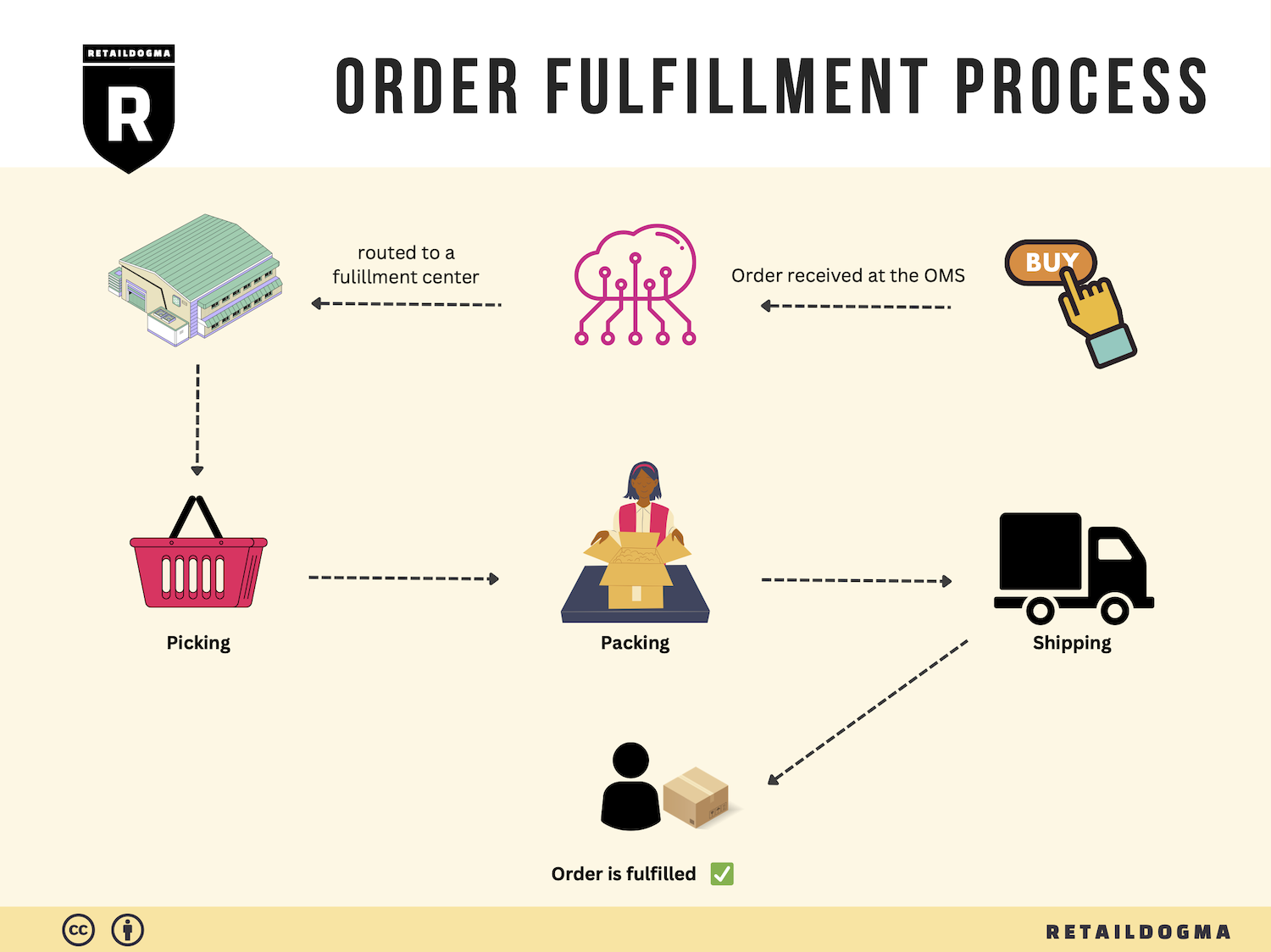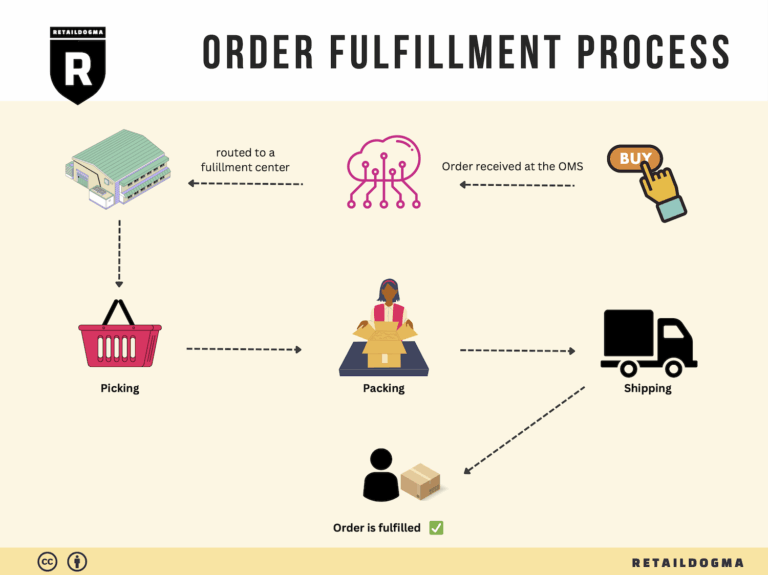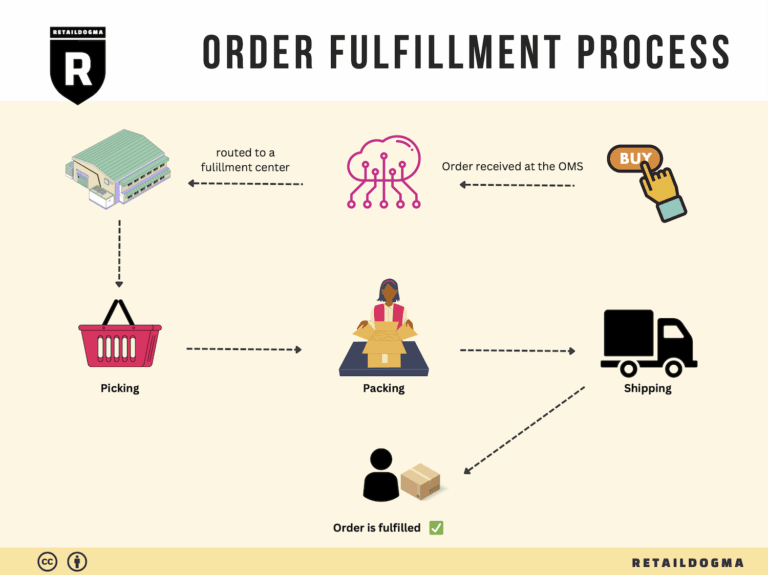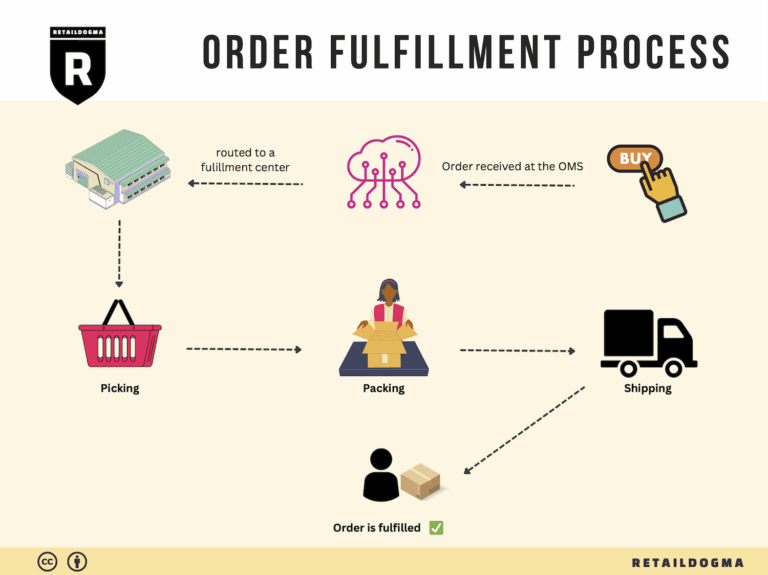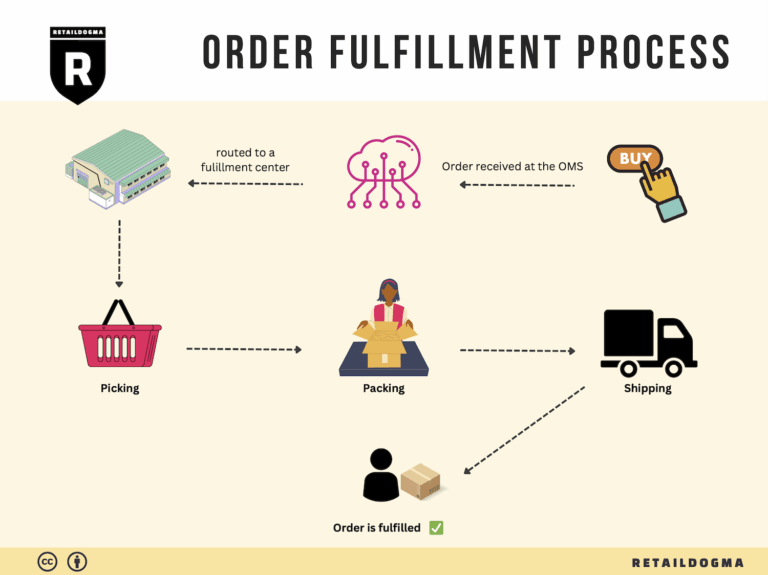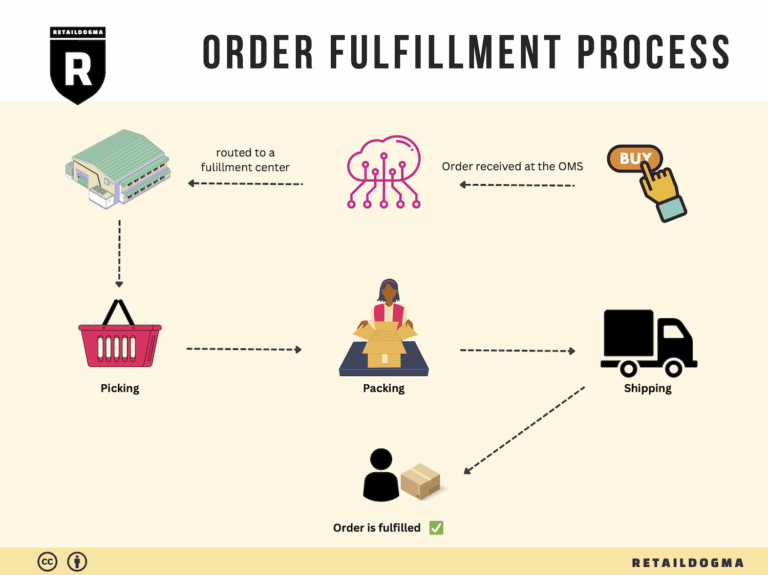How Order Fulfillment Works: A Step-by-Step Guide for Businesses
What is E-commerce Fulfillment? An Introduction for Growing Businesses
Understanding E-commerce Fulfillment
As your online business begins to grow, one of the most pressing challenges you may encounter is managing the packing and shipping of orders. The excitement of increasing sales can quickly turn into overwhelm when faced with the logistics of getting products to customers in a timely and efficient manner. This is where understanding e-commerce fulfillment becomes essential.
At its core, fulfillment is the process of getting a product from your inventory to the customer’s doorstep. This encompasses everything from receiving and storing products, picking and packing orders, to shipping them out and handling returns. For many growing businesses, navigating these logistics can feel daunting, especially when trying to maintain a high level of customer satisfaction and manage operational costs.
In this guide, we will delve into various fulfillment models that can support your growing e-commerce needs. You’ll learn about options such as Third-Party Logistics (3PL) and Fulfillment by Amazon (FBA), both of which offer unique advantages and can be tailored to your specific business requirements.
We will also explore the core services involved in e-commerce fulfillment, including inventory management, order processing, shipping, and customer service. Understanding these components will help you identify which aspects of fulfillment are crucial for your business and how to optimize them for better efficiency.
Choosing the right fulfillment partner is another key area we’ll cover. The right partner can not only save you time and resources but can also enhance your overall customer experience. We’ll provide practical tips on what to look for in a fulfillment provider, including technology capabilities, scalability, and customer support.
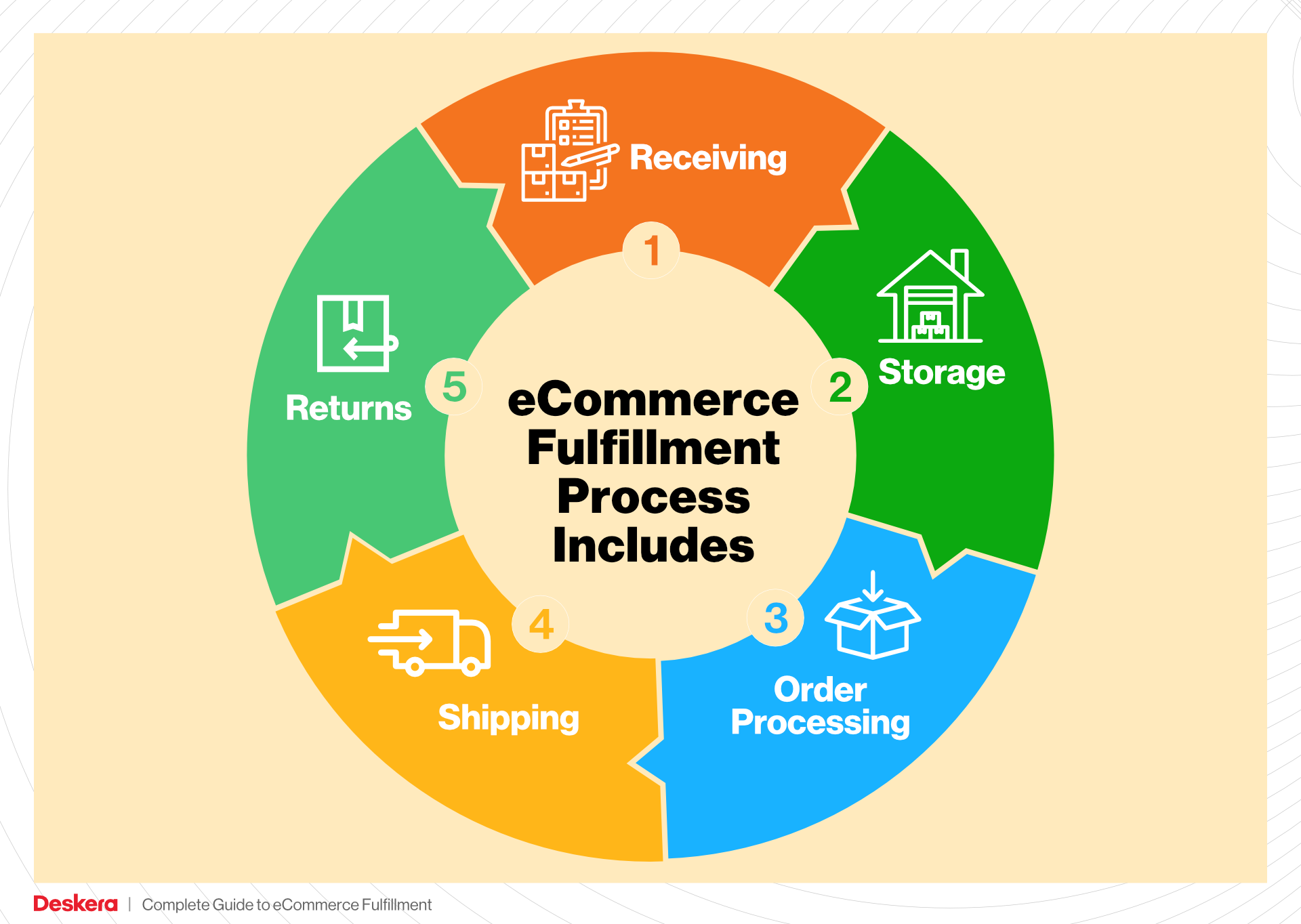
Finally, we’ll discuss pricing models associated with fulfillment services, helping you understand how to budget for these expenses and identify potential areas for cost savings.
The ultimate goal of this guide is to empower you with the knowledge and tools necessary to make informed decisions about your logistics strategy. By understanding the nuances of e-commerce fulfillment, you can streamline your operations, improve customer satisfaction, and position your business for sustainable growth. Whether you’re just starting or looking to scale, this guide will serve as a valuable resource in navigating the complexities of e-commerce fulfillment.
What You’ll Learn In This Guide
- What is E-commerce Fulfillment? An Introduction for Growing Businesses
- The Order Fulfillment Process: From ‘Buy’ Button to Customer’s Door
- Comparing Fulfillment Models: In-House vs. 3PL vs. Dropshipping
- A Deep Dive into Amazon FBA: Pros, Cons, and Who It’s For
- Core Services Offered by Fulfillment Centers
- How to Choose a Fulfillment Partner: A 6-Point Checklist
- Understanding Fulfillment Pricing: A Breakdown of Common Fees
- Frequently Asked Questions (FAQs) about Fulfillment
- Conclusion: Is Outsourcing Fulfillment the Right Move for Your Business?
- Important Disclaimer
The Order Fulfillment Process: From ‘Buy’ Button to Customer’s Door
1. Receiving Inventory
The order fulfillment process begins with receiving inventory, a crucial step where products are accepted into the fulfillment center. This involves checking shipments against purchase orders to ensure accuracy in quantity and quality. Each item is usually assigned a Stock Keeping Unit (SKU), a unique identifier that helps track inventory effectively.
This step is essential for maintaining inventory accuracy and ensuring that the right products are available for customers. Any discrepancies found during this process must be addressed immediately to prevent future issues in order fulfillment. Effective receiving processes minimize errors and optimize inventory turnover, which is vital for scaling e-commerce operations.
2. Warehouse Storage
Once inventory is received and verified, the next step is warehouse storage. Items are organized and stored in designated locations within the fulfillment center. The organization method can vary, but common practices include using a bin system or shelving units that facilitate easy access.
Proper warehouse storage is important because it directly impacts efficiency in the subsequent steps of the fulfillment process. A well-organized warehouse reduces the time required to locate products, which speeds up order processing. Utilizing Warehouse Management Systems (WMS) can further enhance this step by providing real-time data on inventory levels and location, enabling better decision-making as your business scales.
3. Order Picking
Order picking is the process of retrieving items from storage to fulfill customer orders. This step can be performed using various methods, including single order picking, batch picking, or zone picking, depending on the volume of orders and the layout of the warehouse. Pick lists are generated, detailing the items and their locations, to guide staff in efficiently gathering products.
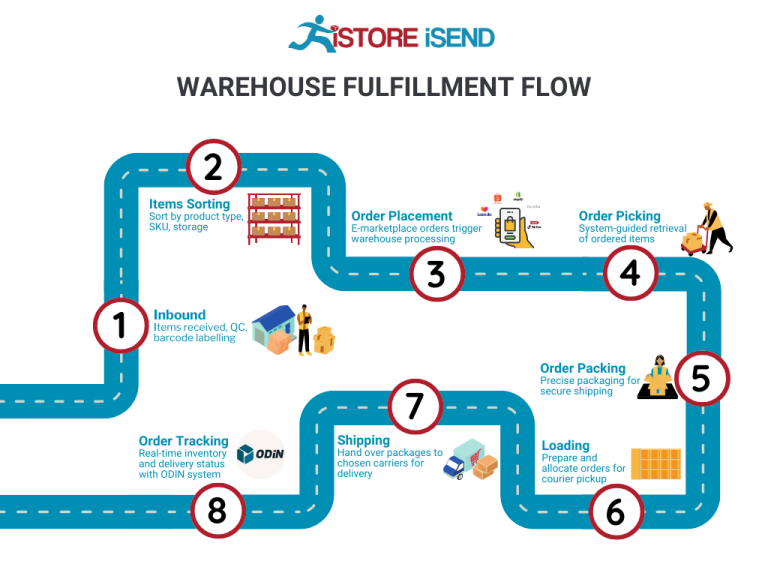
The importance of this step cannot be overstated; accurate order picking ensures that customers receive the correct items, which is critical for customer satisfaction and retention. Implementing technology, such as barcode scanning, can reduce picking errors and enhance efficiency. As your business grows, optimizing the picking process will be vital to managing increased order volumes without sacrificing service quality.
4. Order Packing
After items are picked, they move to the packing stage, where they are prepared for shipment. This involves checking the picked items against the order details, packing them securely in appropriate packaging materials, and labeling them for delivery. Key considerations during packing include ensuring that items are protected from damage and that shipping labels are accurate.
Effective packing is crucial for minimizing returns due to damaged goods and ensuring timely delivery. Businesses should consider using packing software that can automate label printing and provide packing slips. This not only streamlines the process but also enhances the customer experience by providing clear communication about order details.
5. Shipping & Delivery
The final step in the order fulfillment process is shipping and delivery. Once orders are packed, they are handed off to shipping carriers for delivery to customers. This step requires careful planning to choose the right shipping methods and carriers based on cost, speed, and reliability.
Timely shipping is essential for customer satisfaction, as delays can lead to negative reviews and lost sales. Businesses should monitor shipping performance metrics, such as on-time delivery rates and shipping costs, to optimize their logistics strategy. Leveraging a multi-carrier shipping strategy can provide flexibility and cost savings, especially as your e-commerce operations expand.
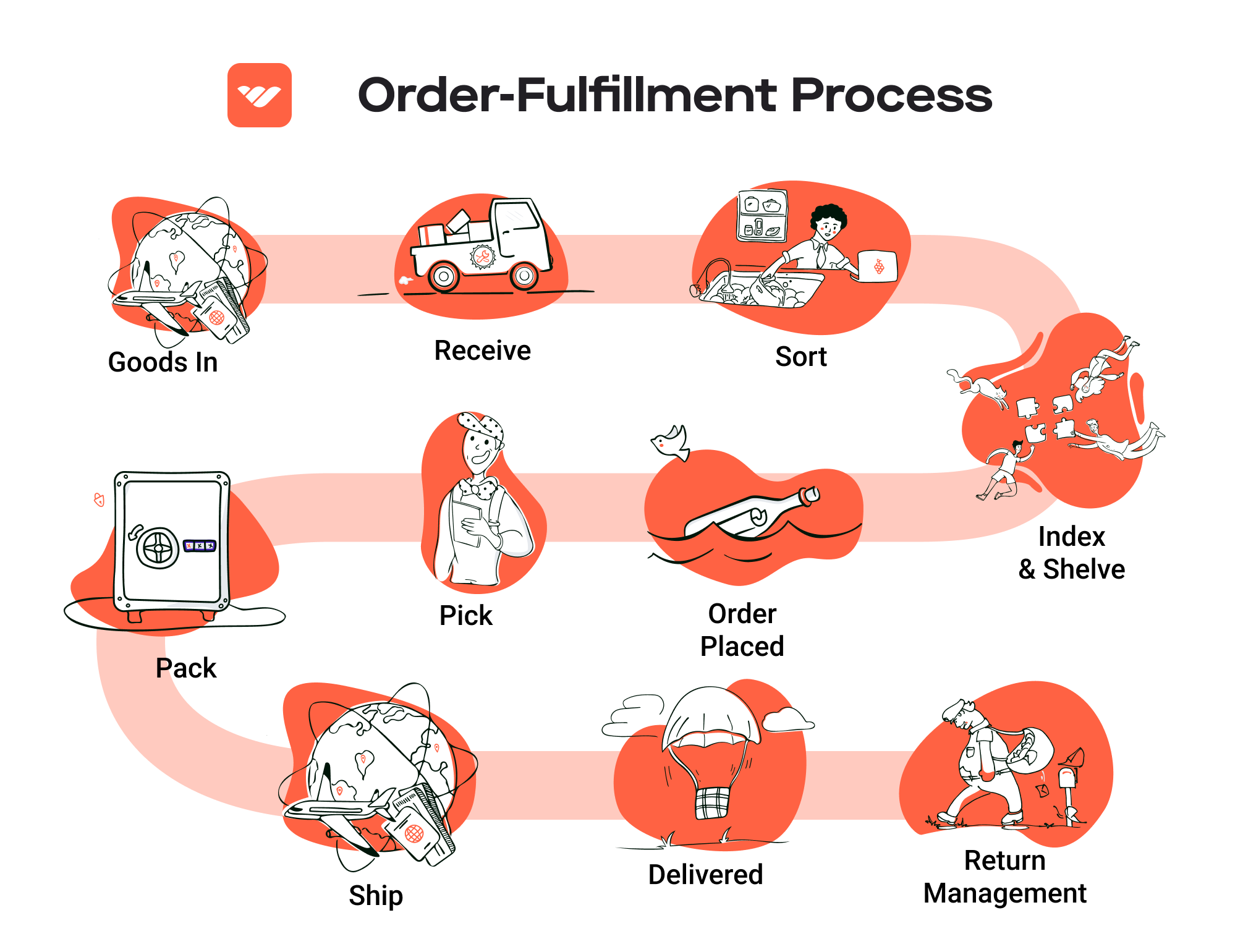
In conclusion, a streamlined order fulfillment process is critical for any e-commerce business aiming to scale. Each step—from receiving inventory to shipping and delivery—plays a vital role in ensuring that customers receive their orders accurately and on time. By focusing on efficiency and accuracy in these processes, businesses can enhance customer satisfaction and drive growth.
Comparing Fulfillment Models: In-House vs. 3PL vs. Dropshipping
Fulfillment Model Comparison
| Model | Who Handles Inventory | Best For (Business Stage) | Key Advantage | Key Disadvantage |
|---|---|---|---|---|
| In-House Fulfillment | The business itself | Startups to established businesses | Full control over inventory and operations | High overhead costs and management complexity |
| Third-Party Logistics (3PL) | A third-party logistics provider | Growth-stage businesses | Scalable solutions and reduced operational burden | Less control over inventory and fulfillment process |
| Dropshipping | Supplier/vendor | New businesses or niche markets | Low startup costs and minimal risk | Lower profit margins and reliance on supplier reliability |
In-House Fulfillment
In-house fulfillment refers to a model where the e-commerce business manages its inventory, warehousing, and shipping operations directly. This approach is often favored by startups and established businesses that require complete control over their logistics processes. One of the significant advantages of in-house fulfillment is the ability to maintain high standards for inventory management and order processing. Businesses can customize their operations to fit their specific needs, ensuring that customer service is tailored and responsive. However, this model comes with substantial drawbacks, including high overhead costs related to warehousing, staffing, and technology investments. Additionally, managing logistics can divert focus from core business activities such as marketing and product development. As businesses scale, the complexities of in-house fulfillment can become overwhelming, making it necessary to consider alternatives.
Third-Party Logistics (3PL)
Third-party logistics (3PL) involves outsourcing the fulfillment process to specialized logistics providers. This model is particularly suitable for businesses in the growth stage that need to scale their operations without the burden of managing warehousing and shipping. 3PL providers offer a range of services, including inventory management, order fulfillment, and shipping logistics, allowing businesses to focus on their core competencies. The key advantage of using a 3PL is the scalability it provides; businesses can easily adjust their logistics needs based on demand fluctuations without incurring significant fixed costs. However, one of the main disadvantages is the reduced control over the inventory and fulfillment process. Businesses must rely on their 3PL partner to maintain quality standards and timely deliveries, which can pose risks if the provider fails to meet expectations. Moreover, integrating a 3PL into existing systems can require considerable effort and investment in technology.
Dropshipping
Dropshipping is a fulfillment model where the retailer does not keep products in stock but instead transfers customer orders and shipment details directly to a supplier, who then ships the products directly to the customer. This model is especially appealing to new entrepreneurs and businesses entering niche markets due to its low startup costs and minimal risk. Since the retailer does not handle inventory or shipping, operational overhead is significantly reduced. This allows businesses to offer a wide range of products without the need for substantial upfront investment in inventory. However, dropshipping also presents challenges, particularly concerning profit margins, which tend to be lower than other models due to the reliance on suppliers. Additionally, businesses face risks related to supplier reliability, including stockouts and shipping delays, which can negatively impact customer satisfaction. Quality control is also an issue, as the retailer has limited visibility into the supplier’s inventory and fulfillment processes.
Conclusion
Selecting the right fulfillment model is crucial for the success of an e-commerce business. In-house fulfillment provides control but at a high cost, while 3PL offers scalability but less oversight. Dropshipping is ideal for low-risk entry into the market but carries challenges in terms of margins and supplier reliability. Business owners must evaluate their operational capabilities, financial resources, and growth strategies to determine the most suitable fulfillment model for their needs.
A Deep Dive into Amazon FBA: Pros, Cons, and Who It’s For
Understanding Fulfillment by Amazon (FBA)
Fulfillment by Amazon (FBA) is a service offered by Amazon that allows e-commerce sellers to store their products in Amazon’s fulfillment centers. Amazon takes care of storage, packaging, and shipping of products directly to customers. Sellers simply need to manage their inventory and list their products on the Amazon marketplace. With FBA, sellers can leverage Amazon’s extensive logistics network and customer service capabilities, gaining access to millions of potential buyers.
How FBA Works
-
Set Up Your FBA Account: Sellers create an Amazon Seller Account and enroll in FBA. They can then set their products to be fulfilled by Amazon.
-
Send Inventory to Amazon: After enrolling, sellers prepare their products, label them according to Amazon’s requirements, and ship them to designated Amazon fulfillment centers.
-
Storage and Management: Once the products are received at the fulfillment center, Amazon takes care of storage and inventory management. Sellers can monitor their inventory levels through the Amazon Seller Central dashboard.
-
Order Fulfillment: When a customer places an order, Amazon picks, packs, and ships the product on behalf of the seller. Amazon also handles all customer service inquiries and returns.
-
Payment: Sellers receive payments for their sales, minus Amazon’s fees, which include storage and fulfillment fees.
Pros of FBA
Prime Eligibility
One of the significant advantages of FBA is the eligibility for Amazon Prime. Products fulfilled by Amazon are automatically eligible for Prime’s two-day shipping, attracting Prime members who prefer faster shipping options. This can significantly boost sales, as Prime members tend to spend more than non-members.
Customer Trust
Amazon is a trusted brand, and using FBA can enhance a seller’s credibility. Customers often feel more confident purchasing products that are fulfilled by Amazon due to reliable shipping, easy returns, and Amazon’s customer service. This trust can lead to higher conversion rates and repeat purchases.
Multi-Channel Fulfillment
FBA isn’t limited to just Amazon’s marketplace. Sellers can utilize Amazon’s fulfillment services for products sold on other platforms, such as eBay or their own websites. This multi-channel fulfillment capability allows sellers to streamline operations and reduce logistics complexities.
Scalability
FBA allows sellers to scale their business without the burden of managing their own warehousing and shipping operations. As sales grow, sellers can send more inventory to Amazon, and the fulfillment process remains consistent regardless of order volume.
Cons of FBA
High Fees
While FBA provides significant benefits, the service comes with various fees, including storage fees for items stored in Amazon’s warehouses and fulfillment fees per order. These costs can eat into profit margins, especially for sellers with lower-priced items or those with slow-moving inventory.
Strict Inventory Rules
Amazon enforces strict inventory management rules, including limitations on the number of units that can be stored in fulfillment centers. Sellers need to monitor their inventory closely to avoid overstocking or incurring long-term storage fees for unsold items.
Commingling Risks
One of the potential downsides of FBA is the risk of commingling inventory. When sellers use FBA, their products may be stored alongside products from other sellers. This can lead to issues such as counterfeit products or incorrect shipments. Sellers must be diligent in their quality control and consider using Amazon’s labeling service to mitigate these risks.
Dependency on Amazon
By utilizing FBA, sellers become dependent on Amazon’s platform and policies. Changes in Amazon’s algorithms, fulfillment processes, or fee structures can significantly impact a seller’s business. It’s crucial for sellers to stay informed about any updates that may affect their operations.
Who is FBA Best For?
FBA can be an excellent fit for various types of sellers, including:
-
Small to Medium-Sized Businesses: Businesses that lack the resources to manage their own warehousing and logistics can benefit greatly from the efficiency and scalability of FBA.
-
Sellers with High Sales Volume: Sellers who anticipate high sales volumes can take advantage of FBA’s streamlined fulfillment processes, allowing them to focus on other aspects of their business, such as marketing and product development.
-
Brands Seeking Brand Trust: New brands that are looking to establish credibility can leverage Amazon’s reputation and customer service to build trust with potential buyers.
-
E-commerce Entrepreneurs: Entrepreneurs who are launching new products and want to reach a broader audience quickly can use FBA to simplify the fulfillment process and gain access to Amazon’s vast customer base.
In conclusion, Fulfillment by Amazon offers significant advantages that can help businesses scale effectively. However, it’s essential to weigh the pros and cons carefully and assess whether FBA aligns with your business goals and operational capabilities.
Core Services Offered by Fulfillment Centers
Inventory Management & Warehousing
Inventory management and warehousing are foundational services provided by fulfillment centers, ensuring that e-commerce businesses can store, track, and manage their stock efficiently. Fulfillment centers utilize advanced inventory management systems that allow businesses to monitor stock levels in real-time, receive alerts for low inventory, and automate reordering processes.
Benefits:
1. Space Optimization: By utilizing a fulfillment center’s warehousing capabilities, businesses can free up valuable space in their own facilities or homes. This is particularly advantageous for small to medium-sized enterprises that may not have the resources to maintain a large storage area.
-
Accuracy and Efficiency: Advanced tracking systems reduce errors in inventory counts, which leads to improved order accuracy. This is critical in maintaining customer satisfaction and trust, as inaccurate inventory levels can lead to stockouts or overstock situations.
-
Scalability: As a business grows, its inventory needs will change. Fulfillment centers provide scalable solutions that can adjust to fluctuating demands without the need for a significant capital investment in additional warehousing space.
Pick and Pack Services
Pick and pack services involve the process of retrieving items from inventory (picking) and packaging them for shipment (packing). This service is critical in ensuring that customers receive the correct products in a timely manner. Fulfillment centers employ trained staff and optimized systems to streamline these processes.
Benefits:
1. Speed and Efficiency: Fulfillment centers are equipped with systems designed to optimize the picking process, such as barcode scanning and automated picking routes. This leads to faster order fulfillment, which is crucial in today’s e-commerce landscape where consumers expect rapid delivery.
-
Cost-Effective Labor: Outsourcing pick and pack services allows businesses to reduce labor costs associated with hiring, training, and managing warehouse staff. Fulfillment centers have the expertise and staffing solutions in place to handle fluctuations in order volume.
-
Quality Control: Many fulfillment centers implement quality control checks during the picking and packing processes to ensure that orders are accurate and meet the required standards. This minimizes the likelihood of returns and enhances customer satisfaction.
Kitting and Assembly
Kitting and assembly refer to the process of grouping multiple items together into a single package or creating products from individual components. This service is particularly useful for businesses that offer bundled products or require assembly before shipment.
Benefits:
1. Enhanced Product Offerings: By utilizing kitting services, e-commerce businesses can offer unique bundles or assembled products that may attract more customers. This can create additional revenue streams and differentiate a brand from its competitors.
-
Time Savings: Outsourcing kitting and assembly to a fulfillment center saves businesses time, allowing them to focus on other critical areas such as marketing and customer service. This is especially beneficial for startups and smaller businesses with limited resources.
-
Reduced Errors: Fulfillment centers often have established processes for kitting and assembly, which can lead to greater consistency and fewer mistakes. This reliability is essential in maintaining a positive brand reputation and ensuring customer satisfaction.
Returns Management (Reverse Logistics)
Returns management, or reverse logistics, involves handling the process of returned goods from customers back to the fulfillment center. This service is critical for e-commerce businesses, as managing returns effectively can significantly impact customer loyalty and overall profitability.
Benefits:
1. Streamlined Processes: Fulfillment centers have systems in place to efficiently process returns, including inspecting returned items, restocking them, or managing repairs as necessary. This reduces the time and effort businesses need to spend on handling returns.
-
Data Insights: Analyzing return data can provide valuable insights into customer behavior and product performance. Fulfillment centers can help businesses identify trends in returns, allowing them to make informed decisions about inventory, product quality, and customer satisfaction.
-
Improved Customer Experience: A seamless returns process enhances the customer experience, encouraging repeat business. Customers are more likely to shop with a brand that offers hassle-free returns, which can lead to increased sales and brand loyalty.
In conclusion, partnering with a fulfillment center for these core services not only streamlines operations but also empowers e-commerce businesses to focus on growth and customer satisfaction. By leveraging these services, businesses can optimize their logistics, reduce costs, and enhance their overall operational efficiency, ultimately leading to a more scalable and successful e-commerce venture.
How to Choose a Fulfillment Partner: A 6-Point Checklist
Location & Warehouse Network
Why It’s Important:
The geographical location of your fulfillment partner plays a critical role in shipping efficiency and cost. A partner with strategically placed warehouses can significantly reduce shipping times and costs, especially if you are targeting multiple regions or countries.
Questions to Ask:
– Where are your warehouses located, and how many do you operate?
– How do you determine the best warehouse for order fulfillment?
– Can you accommodate my shipping needs for both domestic and international markets?
– What are your average shipping times to key regions?
Technology & Integrations
Why It’s Important:
In today’s fast-paced e-commerce environment, robust technology and seamless integrations with your existing platforms (like your e-commerce site, inventory management systems, and ERPs) are vital. This ensures real-time data visibility and efficient order processing.
Questions to Ask:
– What technology platforms do you use for order management and inventory tracking?
– Can your systems integrate with my current e-commerce platform (Shopify, WooCommerce, etc.)?
– Do you provide real-time tracking information for orders?
– How do you handle system outages or technology failures?
Specializations (e.g., Cold Storage, Oversized Items)
Why It’s Important:
If your products require special handling—such as temperature control for perishables or extra care for oversized items—partnering with a fulfillment center that specializes in these areas is essential. This ensures compliance with regulations and reduces the risk of product damage.
Questions to Ask:
– What types of specialized services do you offer (e.g., cold storage, fragile items)?
– Do you have the necessary certifications for handling specific product types?
– How do you ensure compliance with industry regulations?
– Can you provide case studies or references for similar products you’ve handled?
Scalability & Capacity
Why It’s Important:
As your business grows, your fulfillment needs will evolve. A partner that can scale with you—whether through increased capacity during peak seasons or flexibility in services—will help you avoid disruptions and maintain customer satisfaction.
Questions to Ask:
– What is your maximum capacity for order fulfillment?
– How do you manage peak seasons, and can you accommodate sudden increases in order volume?
– Do you have a plan for scaling operations if my business grows significantly?
– What are your lead times for ramping up operations?
Pricing and Contracts
Why It’s Important:
Understanding the pricing structure and contract terms is crucial for budgeting and financial planning. Hidden fees or unfavorable contract terms can erode profit margins. Transparency is key.
Questions to Ask:
– Can you provide a detailed breakdown of your pricing model (e.g., storage fees, pick and pack fees, shipping costs)?
– Are there any hidden fees I should be aware of?
– What are the contract terms, including cancellation policies?
– Do you offer volume discounts or incentives for long-term contracts?
Customer Support & Reviews
Why It’s Important:
Effective customer support can make or break your fulfillment experience. Having a responsive support team means issues can be resolved quickly, minimizing disruptions. Additionally, reviews and testimonials provide insights into the partner’s reliability and service quality.
Questions to Ask:
– What level of customer support do you provide (e.g., 24/7 support, dedicated account manager)?
– How do you handle customer complaints or issues?
– Can you provide references or case studies from current clients?
– What do your online reviews say about your service quality?
Conclusion
Choosing the right fulfillment partner is a critical decision that can significantly impact your e-commerce business’s efficiency and customer satisfaction. By thoroughly evaluating potential partners against this checklist, you can make an informed choice that aligns with your operational goals and growth trajectory. Remember, this partnership should not only support your current needs but also adapt to your evolving business landscape.
Understanding Fulfillment Pricing: A Breakdown of Common Fees
Initial Setup Fees
Initial setup fees are one-time charges that e-commerce businesses encounter when establishing a relationship with a fulfillment center. These fees typically cover the costs associated with onboarding your business into the fulfillment system. They may include technology integration, account setup, and any necessary training for your staff.
The calculation of initial setup fees can vary significantly between fulfillment centers, depending on the complexity of your needs and the technology in use. Some fulfillment centers might offer a flat fee for basic services, while others may charge based on the number of SKUs (Stock Keeping Units) or the volume of orders you anticipate. It’s essential to discuss these details upfront to avoid surprises later on.
Receiving Fees
Receiving fees are charged when your inventory arrives at the fulfillment center. These fees cover the labor and resources required to unload, inspect, and enter your products into their inventory system.
Typically, receiving fees are calculated per pallet or per hour of labor. For instance, if your shipment consists of multiple pallets, the fulfillment center may charge a fee for each pallet received. Additionally, if your products require special handling (like fragile items), you may incur additional charges. Understanding this fee is crucial, as it can significantly impact your overall fulfillment costs, especially during peak seasons.
Storage Fees (per pallet/bin)
Storage fees are ongoing charges for storing your inventory at the fulfillment center. This fee is typically calculated on a per-pallet or per-bin basis and can vary depending on the volume of inventory you have stored.
Fulfillment centers often charge monthly storage fees, which can be influenced by the amount of space your products occupy. Additionally, some centers may have tiered pricing structures, where the rate decreases as you store larger quantities. It’s important to note that many fulfillment centers also impose long-term storage fees for inventory that remains unsold for an extended period, so proactive inventory management is key to minimizing these costs.
Pick & Pack Fees (per item/order)
Pick and pack fees are charged for the labor involved in selecting items from your inventory and packing them for shipment. This fee structure can vary widely depending on the fulfillment center, but it is generally calculated on a per-item or per-order basis.
For example, if you have an order that includes five different items, the fulfillment center may charge a pick fee for each item picked and a separate packing fee for the entire order. Some fulfillment centers may offer discounts for bulk orders or for businesses with high order volumes. Understanding this fee is essential, as it can impact your pricing strategy and overall profitability.
Shipping Fees
Shipping fees are perhaps the most variable of all fulfillment charges, influenced by factors such as the destination, package weight, and shipping method. Fulfillment centers typically charge these fees based on the carrier rates they have negotiated, which can vary based on the shipping volume.
Shipping fees may include costs for standard shipping, expedited services, and any additional handling required for large or fragile items. It’s important to discuss with your fulfillment partner how shipping fees are calculated and whether you can leverage their carrier relationships for better rates. Some fulfillment centers also offer flat-rate shipping options, which can simplify budgeting for shipping costs.
Tips for Getting an Accurate Quote
-
Be Transparent About Your Needs: Provide potential fulfillment centers with detailed information about your inventory, order volume, and specific requirements. This transparency will help them give you a more accurate quote.
-
Request a Detailed Breakdown: Ask for a detailed breakdown of all potential fees, including setup, receiving, storage, pick and pack, and shipping. This will help you understand the total cost of fulfillment and avoid unexpected charges.
-
Negotiate Terms: Don’t hesitate to negotiate terms, especially if you are bringing significant business volume. Many fulfillment centers are willing to adjust their pricing based on your commitment.
-
Consider Seasonal Variations: If your business has seasonal peaks, discuss how fulfillment fees might change during high-demand periods. Some centers may offer flexible pricing models to accommodate fluctuations in order volume.
-
Review Contracts Carefully: Before signing any agreements, thoroughly review the terms and conditions, particularly concerning fees. Look for any clauses that might lead to additional charges.
By understanding these common fulfillment pricing models and following these tips, you can make informed decisions that align with your business goals and budget, ultimately enhancing your e-commerce operations.
Frequently Asked Questions (FAQs) about Fulfillment
1. What is the Costco fulfillment center, and how does it operate?
The Costco fulfillment center serves as a hub for processing and shipping online orders placed on Costco.com. It utilizes an efficient logistics system to manage inventory, streamline order picking, and ensure timely delivery to customers. The center is designed to handle a large volume of orders while maintaining high standards of accuracy and speed.
2. What is the difference between a warehouse and a fulfillment center?
A warehouse primarily serves as a storage facility where goods are kept until needed. In contrast, a fulfillment center is focused on processing orders, packaging products, and shipping them directly to customers. Fulfillment centers often incorporate advanced technology to optimize the order fulfillment process, while warehouses may not have such capabilities.
3. How does Costco handle shipping for online orders?
Costco utilizes various shipping carriers to deliver products ordered online. Once an order is placed, the fulfillment center picks, packs, and ships the items. Customers can choose different shipping options, which may include standard, expedited, or same-day delivery, depending on the item’s availability and the delivery location.
4. What is a 3PL, and how does it relate to Costco’s fulfillment services?
A 3PL, or third-party logistics provider, is a service that manages logistics and fulfillment tasks for businesses. While Costco primarily handles its own fulfillment through its centers, it may partner with 3PLs for specific needs or to expand its logistics capabilities. This allows Costco to efficiently manage inventory and delivery without investing heavily in additional infrastructure.
5. How much do fulfillment services cost?
Fulfillment service costs can vary widely based on factors such as order volume, storage requirements, and shipping destinations. Generally, costs include storage fees, picking and packing fees, and shipping charges. It’s crucial for businesses to assess their specific needs and compare providers to find the most cost-effective solution.
6. Can I track my order from Costco’s fulfillment center?
Yes, customers can track their orders from Costco’s fulfillment center. Once an order is shipped, customers receive a tracking number via email, which they can use to monitor the delivery status through the shipping carrier’s website.
7. What types of products are available for online purchase through Costco’s fulfillment center?
Costco’s fulfillment center offers a wide range of products, including groceries, household items, electronics, and more. The selection may vary based on availability, and certain items may be exclusive to online shopping, providing customers with unique offerings that may not be found in physical warehouses.
8. What are the benefits of using Costco’s fulfillment services for my e-commerce business?
Utilizing Costco’s fulfillment services can provide several advantages, including access to a large customer base, efficient logistics, and competitive pricing on shipping. Additionally, businesses can benefit from Costco’s reputation for quality and customer service, which can enhance their brand’s credibility.
9. How does Costco ensure the accuracy of orders in its fulfillment center?
Costco employs various technologies and processes to ensure order accuracy, including barcode scanning, automated inventory management systems, and quality control checks during the packing process. These measures help minimize errors and ensure that customers receive the correct items in a timely manner.
10. What should I consider when choosing a fulfillment partner for my business?
When selecting a fulfillment partner, consider factors such as the provider’s experience, technology capabilities, shipping options, pricing structure, and customer service. Additionally, assess how well the partner can scale with your business as it grows and whether they can accommodate your specific product needs. Evaluating these aspects can help you make an informed decision that supports your business’s logistics strategy.
Conclusion: Is Outsourcing Fulfillment the Right Move for Your Business?
The Case for Outsourcing Fulfillment
Outsourcing fulfillment can be a transformative decision for your e-commerce business, offering numerous benefits that can significantly impact your operations and growth trajectory. One of the primary advantages is time savings. By partnering with a fulfillment service, you can redirect valuable resources away from logistics and focus on core business activities such as marketing, product development, and customer engagement. This shift not only enhances productivity but also fosters innovation and strategic initiatives that drive revenue.
Scalability is another compelling reason to consider outsourcing. As your business grows, so too do the complexities of order management, inventory control, and shipping logistics. A robust fulfillment partner can seamlessly adjust to fluctuations in order volume, ensuring that your operations remain efficient without the need for substantial capital investment in infrastructure or staffing. This flexibility allows you to respond swiftly to market demands and seasonal spikes, keeping your business competitive.
Additionally, utilizing a fulfillment service brings specialized expertise into your operations. These partners possess deep industry knowledge and advanced technologies that can optimize your supply chain, improve delivery times, and enhance customer satisfaction. Leveraging their capabilities can elevate your service levels and give you an edge in a crowded marketplace.
However, choosing the right fulfillment partner is critical to realizing these benefits. It’s essential to assess potential partners based on their reliability, technology, and alignment with your business goals.
Take Action
To determine if outsourcing fulfillment is the right move for your business, conduct an audit of your current shipping and logistics processes. Identify areas where inefficiencies exist or where you could benefit from external expertise. This evaluation will provide clarity on whether partnering with a fulfillment center, such as Costco Logistics, is a strategic next step for your growth. Embrace the opportunity to enhance your operations and set your business on a path toward scalable success.
Important Disclaimer
⚠️ Important Disclaimer
The information in this guide is for educational purposes. Fulfillment services, pricing, and platform features change frequently. Always conduct your own due diligence and consult with providers directly before making business decisions.
